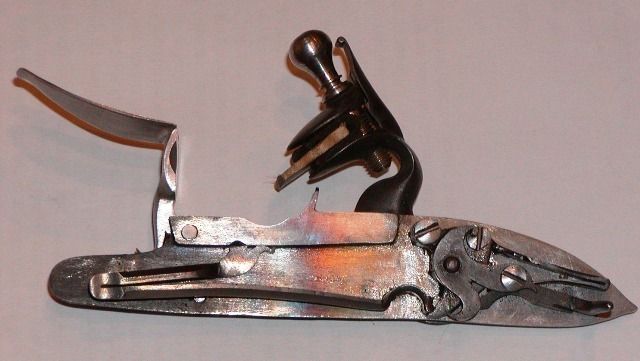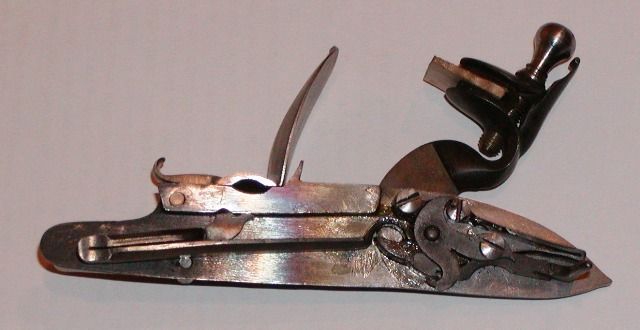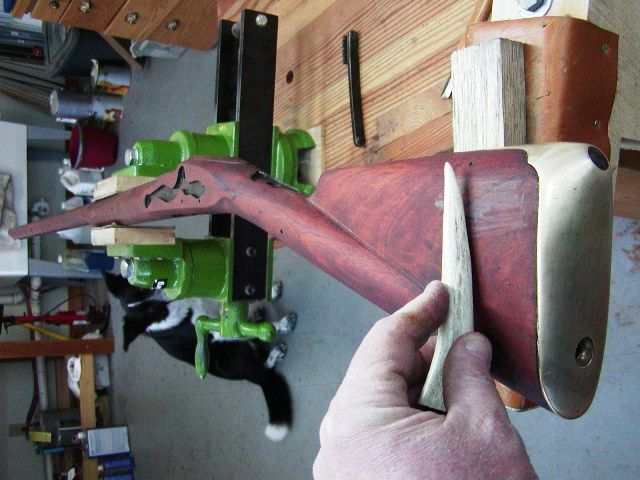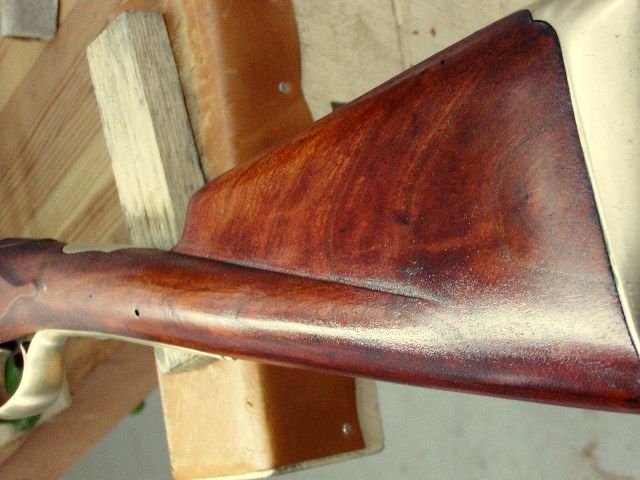Dave,
I purchased my old Brown Bess Carbine in I think it was the Fall 1974 Nationals of the North South Skirmish Association while working as a gunsmith in what was then known as "The Navy Arms Booth/Cabin." The Cabin actually belonged to Donald "Bucky" Malson who was one of Navy Arms' Distributors. Val Forgett, Jr. often came into the cabin at night, especially to raid the cookies sent by Mrs. Betty Higginson, CWO3 Frank Higginson's wife. Miss Betty's cookies were somewhat legendary.
After a few Nationals that I worked and had purchased my first copy of Dr. Bailey's first book, I asked Val Forgett, Jr. how the Navy Arms/Pedersoli Brown Bess had come to be made. He informed me that they had purchased an original and sent it to Italy to copy.
Val Forgett, Jr. was very knowledgeable on Civil War Guns and especially Civil War Cannon, but not that knowledgeable on Revolutionary War Arms at that time. Val was also always looking "for a deal" so the original Bess that was purchased was not necessarily the most authentic Bess that was available for purchase. Val did believe it was "correct" at the time it was purchased, though.
When that Bess was sent to Italy, it was not required that it was an exact copy, just as close as possible AND at a price that would sell in the U.S. This was the same way Val got the Repro Navy Colt revolver and “Zouave” Musket made in Italy. So none of the common Italian made Repro’s were exact copies and the quality was not as good as the originals.
In the mid 80’s at the SHOT Show in New Orleans, Sue Hawkins of EuroArms introduced me to Mr. Zoli of Zoli Arms, a huge maker of reproduction guns in Italy. Of course he was extremely busy at the Show, but took the time to answer a question that had been bugging me for years. I knew they could make more exact copies of the originals and of at least equal quality referencing their modern shotguns especially, so I asked him why they did not. He informed me that they surely could make exact reproductions and of better quality with modern steels, but they would not sell at the price that would have to be asked for that quality. He explained that a S&W Model 19 Revolver was then currently going for about $ 235.OO and almost NO ONE would pay that much for a Repro Colt Navy Revolver. So they built a gun that could sell for around $ 145.00 and they got complaints about that “high” of a price.
So when Pedersoli produced the prototypes of the Brown Bess for a price that would sell in the U.S., Val Forgett, Jr. said they were “close enough” for the price. I got the “Distributor Price” on my Brown Bess Carbine in the mid 70’s that was below Dealer Cost and Retail. I don’t remember exactly what I paid for it then, but it was around $ 340.00 or slightly more. Just three years or so before that, I had paid $ 175.00 Retail for my then brand new .50 Cal. T/C Hawken Rifle. The Brown Bess had cost me almost a Month’s Salary as a Single Marine Sergeant, even at the Distributor Price. So it was a pretty hefty investment to pay for a hobby.
So, bottom line, Pedersoli did not produce an exact copy of an Original Bess, just something “close enough” that could sell in the U.S. at a price it was worth making the reproductions to sell in the quantity needed to produce the guns for the U.S. market.
Gus








